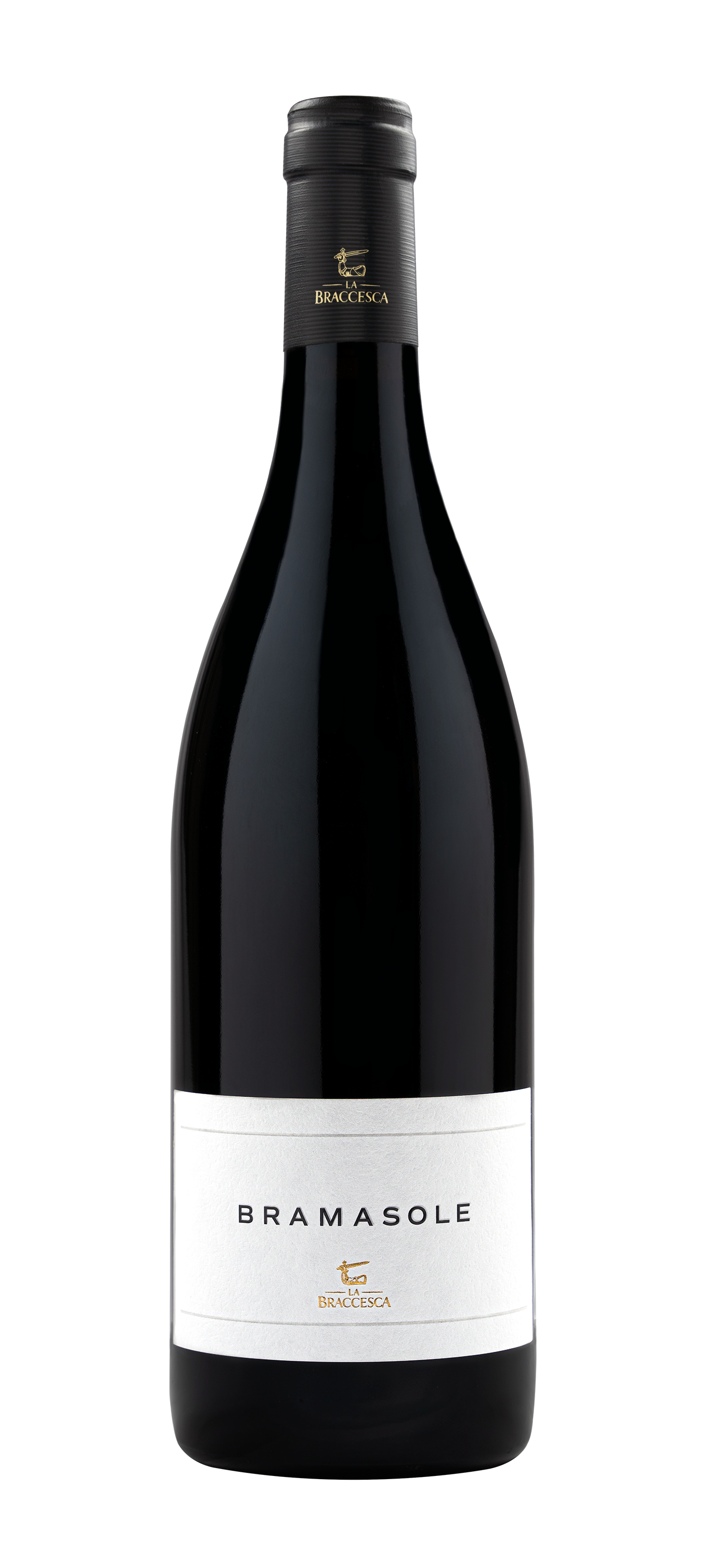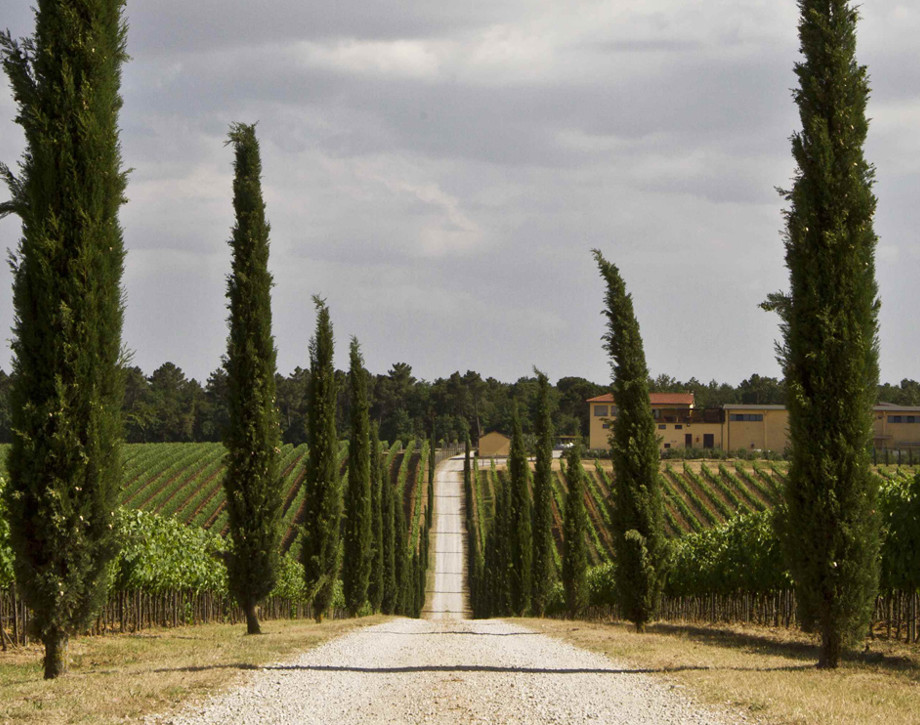Bramasole

Climate
The climate of the 2008 vintage in Montepulciano and Cortona was characterized by a ten day delay in the ripening cycle of the vine and the grapes compared to recent vintages, but by a growing season which, as well, in the end brought the grapes to perfect maturity. Abundant spring rainfall along with low temperatures, below seasonal averages, resulted in the ten day delay in ripening cited above. The month of August, instead, was warm and dry, but temperatures dipped again in early September, leaving intact the ripening delay of the previous period. This delay in physiological ripening lasted through the entire phase of the vine cycle for such late-ripening varieties as Prugnolo Gentile as well. In conclusion, the maturation of the La Braccesca grapes was a long, gradual, and balanced process, but one which concluded positively thanks to a late September and early October rise in temperatures which assisted in achieving perfectly healthy grapes, well suited - above all in terms of fragrance and elegance - for the production of high level wines.
Vinification
The optimal ripening point of the estate’s Syrah grapes arrived during the second half of the month of September. With a production per vine which averaged from one kilogram to a kilogram and a half, a very low figure, we sought to arrive at excellent ripeness levels both in terms of the sunshine absorbed and the activity of the plant itself. After picking, carried out entirely by hand, the grapes were brought to the cellar, destemmed and given a soft pressing, and the must then transferred to stainless steel tanks to begin its fermentation. Fermentation temperatures were maintained at a maximum level of 28° centigrade (82° Fahrenheit) and the fermentation itself followed a previous three to four day period of cold maceration on the skins at 7° centigrade (45° Fahrenheit) aimed at conserving the fruity and floral notes of the variety. After twenty days of fermentation and skin contact, the wine went into new, French oak barrels (60 gallons in capacity) where it went through a complete malolactic fermentation and began a sixteen month period of barrel aging. Bottling, at 14° of alcohol, took place during the summer of 2010.
Historical Data
The estate’s name comes from the historical farm that once stood there, owned by the Count of Bracci, whose coat of arms appears on the estate’s logo; an arm covered with armor brandishing a sword. The property extends over an area of 508 hectares (1255 acres) and the vineyards cover an area of 340 hectares (840 acres) divided into two blocks: the first is 366 hectares (904 acres) of which 237 (585 acres) are planted with vineyards and is located on the border between the cities of Montepulciano and Cortona. The other block is 142 hectares (350 acres) of which 103 (254 acres) are planted with vineyards, it extends all the way to Montepulciano encompassing three of the most famous parcels of land known for the production of great red wines: Cervognano, Santa Pia and Gracciano. Bramasole is made from the sunniest part of the vineyard in one of Cortona’s best areas for the production of premium quality Syrah. Bramasole is a wine able to evolve over time and reflect this territory and its long-standing winemaking traditions using a new untraditional variety. Bramasole’s first vintage was 2000.
Tasting Notes
A lovely full red in color with aromas of chocolate: these are the characteristics with which this wine presents itself. The first sensations on the palate are sweet and soft, and the long finish and aftertaste show delicate notes of licorice and ripe fruit.
Awards
James Suckling 92/100 USA Wine Enthusiast 92/100 USA

The Wine
Bramasole is made from the sunniest part of the vineyard, from the Antinori family’s innovative spirit and from one of Cortona’s best areas for producing premium quality Syrah. Bramasole is a wine able to evolve over time and reflect this territory and its long-standing winemaking traditions using a new untraditional variety. The first vintage to be produced was the 2000 vintage.

Climate
The climate of the 2008 vintage in Montepulciano and Cortona was characterized by a ten day delay in the ripening cycle of the vine and the grapes compared to recent vintages, but by a growing season which, as well, in the end brought the grapes to perfect maturity. Abundant spring rainfall along with low temperatures, below seasonal averages, resulted in the ten day delay in ripening cited above. The month of August, instead, was warm and dry, but temperatures dipped again in early September, leaving intact the ripening delay of the previous period. This delay in physiological ripening lasted through the entire phase of the vine cycle for such late-ripening varieties as Prugnolo Gentile as well. In conclusion, the maturation of the La Braccesca grapes was a long, gradual, and balanced process, but one which concluded positively thanks to a late September and early October rise in temperatures which assisted in achieving perfectly healthy grapes, well suited - above all in terms of fragrance and elegance - for the production of high level wines.
Vinification
The optimal ripening point of the estate’s Syrah grapes arrived during the second half of the month of September. With a production per vine which averaged from one kilogram to a kilogram and a half, a very low figure, we sought to arrive at excellent ripeness levels both in terms of the sunshine absorbed and the activity of the plant itself. After picking, carried out entirely by hand, the grapes were brought to the cellar, destemmed and given a soft pressing, and the must then transferred to stainless steel tanks to begin its fermentation. Fermentation temperatures were maintained at a maximum level of 28° centigrade (82° Fahrenheit) and the fermentation itself followed a previous three to four day period of cold maceration on the skins at 7° centigrade (45° Fahrenheit) aimed at conserving the fruity and floral notes of the variety. After twenty days of fermentation and skin contact, the wine went into new, French oak barrels (60 gallons in capacity) where it went through a complete malolactic fermentation and began a sixteen month period of barrel aging. Bottling, at 14° of alcohol, took place during the summer of 2010.
Historical Data
The estate’s name comes from the historical farm that once stood there, owned by the Count of Bracci, whose coat of arms appears on the estate’s logo; an arm covered with armor brandishing a sword. The property extends over an area of 508 hectares (1255 acres) and the vineyards cover an area of 340 hectares (840 acres) divided into two blocks: the first is 366 hectares (904 acres) of which 237 (585 acres) are planted with vineyards and is located on the border between the cities of Montepulciano and Cortona. The other block is 142 hectares (350 acres) of which 103 (254 acres) are planted with vineyards, it extends all the way to Montepulciano encompassing three of the most famous parcels of land known for the production of great red wines: Cervognano, Santa Pia and Gracciano. Bramasole is made from the sunniest part of the vineyard in one of Cortona’s best areas for the production of premium quality Syrah. Bramasole is a wine able to evolve over time and reflect this territory and its long-standing winemaking traditions using a new untraditional variety. Bramasole’s first vintage was 2000.
Tasting Notes
A lovely full red in color with aromas of chocolate: these are the characteristics with which this wine presents itself. The first sensations on the palate are sweet and soft, and the long finish and aftertaste show delicate notes of licorice and ripe fruit.
Awards
James Suckling 92/100 USA Wine Enthusiast 92/100 USA

Tenuta La Braccesca
The estate’s name comes from the historical farm that once stood there, owned by the Count of Bracci, whose coat of arms appears on the estate’s logo; an arm covered with armor brandishing a sword. Marchesi Antinori acquired the estate in 1990. The property extends over an area of 508 hectares (1255 acres) and the vineyards cover an area of 340 hectares (840 acres) divided into two blocks: the first is 366 hectares (904 acres) of which 237 (585 acres) are planted with vineyards and is located on the border between the cities of Montepulciano and Cortona. The other block is 142 hectares (350 acres) of which 103 (254 acres) are planted with vineyards, it extends all the way to Montepulciano encompassing three of the most famous parcels of land known for the production of great red wines: Cervognano, Santa Pia and Gracciano.

Soil
Clay loam
















